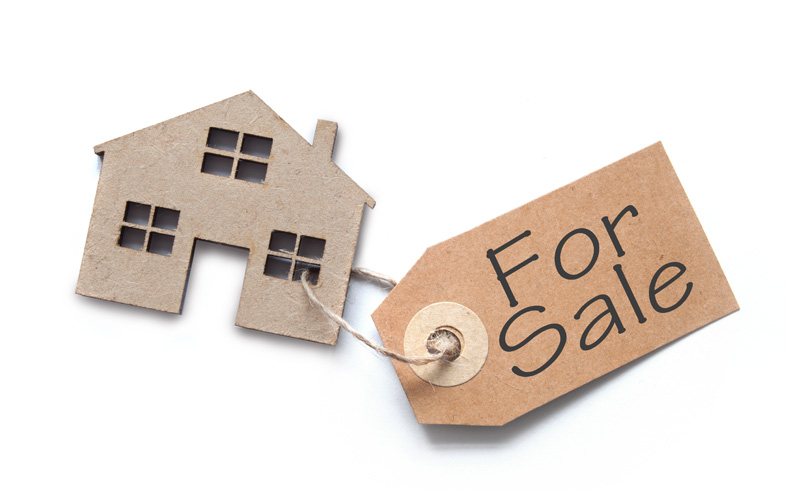Your lending institution calculates a set month-to-month payment based upon the loan quantity, the rate of interest, and the variety of years require to settle the loan. A longer term loan leads to greater interest costs over the life of the loan, effectively making the home more pricey. The rate of interest on variable-rate mortgages can alter at some point.
Your payment will increase if rates of interest go up, but you might see lower required regular monthly payments if rates fall. Rates are usually repaired for a number of years in the start, then they can be adjusted each year. There are some limitations as to just how much they can increase or reduce.
Second mortgages, likewise called home equity loans, are a way of borrowing against a property you already own. You may do this to cover other expenses, such as debt consolidation or your kid's education expenses. You'll add another mortgage to the residential or commercial property, or put a new first mortgage on the home if it's settled.
They just get payment if there's cash left over after the very first home loan holder makes money in case of foreclosure. Reverse home mortgages can provide earnings to house owners over the age of 62 who have developed equity in their homestheir homes' values are significantly more than the remaining home loan balances against them, if any. In the early years of a loan, many of your home loan payments approach paying off interest, making for a meaty tax deduction. Simpler to certify: With smaller payments, more customers are qualified to get a 30-year mortgageLets you money other goals: After home mortgage payments are made each month, there's more money left for other goalsHigher rates: Due to the fact that lenders' threat of not getting repaid is spread out over a longer time, they charge greater interest ratesMore interest paid: Paying interest for 30 years amounts to a much greater total cost compared to a shorter loanSlow development in equity: It takes longer to build an equity share in a homeDanger of overborrowing: Qualifying for a bigger home mortgage can tempt some individuals to get a bigger, better house that's more difficult to pay for.


Higher maintenance costs: If you go for a pricier house, you'll deal with steeper costs for property tax, maintenance and perhaps even energy expenses. "A $100,000 house might require $2,000 in yearly maintenance while a $600,000 house would need $12,000 annually," says Adam Funk, a licensed monetary coordinator in Troy, Michigan.
With a little preparation, you can integrate the security of a 30-year home mortgage with one of the main benefits of a much shorter mortgage a quicker course to totally owning a home. How is that possible? Pay off the loan earlier. It's that easy. If you wish to attempt it, ask your lending institution for an amortization schedule, which shows how much you would pay each month in order to own the home completely in 15 years, 20 years or another timeline of your picking.
Making your mortgage payment immediately from your bank account lets you increase your month-to-month auto-payment to fulfill your objective but bypass the boost if needed. This technique isn't identical to a getting a shorter mortgage because the interest rate on your 30-year mortgage will be a little greater. Instead of 3.08% for a 15-year fixed home loan, for example, a 30-year term may have a rate of 3.78%.
For mortgage consumers who desire a shorter term but like the flexibility of a 30-year home loan, here's some recommendations from James D. Kinney, a CFP in New Jersey. He recommends purchasers evaluate the monthly payment they can afford to make based on a 15-year home mortgage schedule but then getting the 30-year loan.
Whichever method you pay off your home, the biggest benefit of a 30-year fixed-rate home loan might be what Funk calls "the sleep-well-at-night result." It's the warranty that, whatever else changes, your home payment will stay the same.
Purchasing a home with a home loan is probably the largest monetary transaction you will get in into. Normally, a bank or mortgage lending institution will finance 80% of the price Additional hints of the home, and you concur to pay it backwith interestover a specific duration. As https://mix.com/galairck1s/posts?modal=1&url_id=620583294450293760 you are comparing lending institutions, home mortgage rates and choices, it's practical to understand how interest accrues monthly and is paid.
These loans featured either repaired or variable/adjustable rates of interest. Many home mortgages are completely amortized loans, implying that each regular monthly payment will be the exact same, and the ratio of interest to principal will change over time. Put simply, on a monthly basis you repay a portion of the principal (the quantity you have actually obtained) plus the interest accrued for the month.
The length, or life, of your loan, also identifies how much you'll pay each month. Totally amortizing payment refers to a regular loan payment where, if the customer pays according to the loan's amortization schedule, the loan is fully settled by the end of its set term. If the loan is a fixed-rate loan, each totally amortizing payment is an equal dollar quantity.
Extending out payments over more years (up to 30) will normally lead to lower month-to-month payments. The longer you require to settle your home loan, the higher the total purchase expense for your home will be due to the fact that you'll be paying interest for a longer duration. Banks and lending institutions mostly offer 2 kinds of loans: Rate of interest does not change.
Here's how these operate in a house mortgage. The month-to-month payment stays the same for the life of this loan. The rates of interest is secured and does not change. Loans have a payment life span of 30 years; shorter lengths of 10, 15 or twenty years are likewise commonly readily available.
A $200,000 fixed-rate home mortgage for thirty years (360 regular monthly payments) at a yearly interest rate of 4.5% will have a regular monthly payment of approximately $1,013. (Taxes, insurance coverage and escrow are extra and not consisted of in this figure.) The yearly interest rate is broken down into a regular monthly rate as follows: An annual rate of, say, 4.5% divided by 12 equals a regular monthly rate of interest of 0.375%.